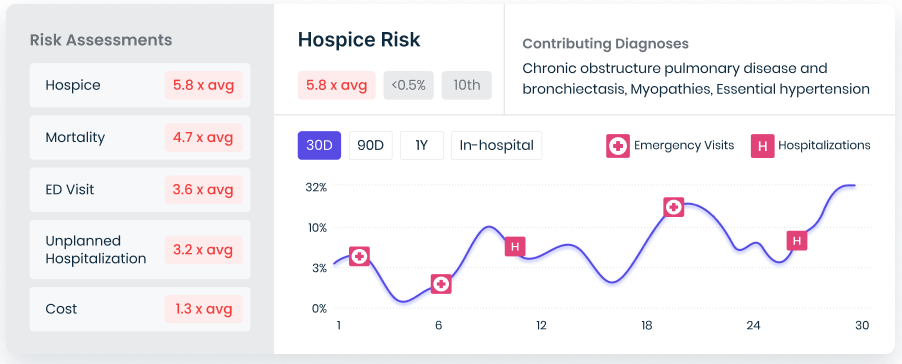By Arielle Rogg, staff writer
As healthcare spending in the US is expected to reach $8 trillion by 2032, and with Medicare and Medicaid representinghalf of that spending, integrating AI in healthcare to align resources and identify the right patient populations is necessary for healthcare organizations to succeed. Enter HDAI – a healthcare and data analytics trailblazer with actionable AI tools that are shifting the way high-performance healthcare organizations operate while improving the provider and patient experience.

Harnessing Two Decades of R&D
HDAI’s journey has been marked by over two decades of dedication to research and development, culminating in the creation of a robust predictive technology platform. The company leverages privileged live access to the nation’s largest longitudinal dataset, encompassing a staggering 100 million patients and 0.5 trillion records. This wealth of data forms the foundation for HDAI’s comprehensive array of predictive models and their unique analytical approach to measuring performance.
Bridging the Analytical-Clinical Gap
HDAI’s enterprise platform, HealthVisionTM, seamlessly integrates with a client’s Electronic Health Record (EHR) and thus facilitates real-time support of clinical decision-making with analytically derived insights to support clinician-specific and patient-specific actionability. HealthVision combines state-of-the-art AI/ML and generative AI technologies with scalable cloud computing, delivering a complete suite of predictive models and AI-optimized workflows across the continuum of care. The platform aggregates EHR encounters into a holistic, single-screen risk profile at the patient level, SpotlightTM, transforming the sprawling, less-structured EHR data into normalized knowledge for the entire care team.
Digital Twinning Optimization
HDAI’s models are rooted in substantial expertise and research. Building on these models is the process of digital twinning whereby every patient is compared with “twins” who have similar demographics and baseline risk, accounting for regional differences and other factors. This precise control group adds meaning and context for specific clients and use cases, enabling a deep understanding of patient-, physician-, and population-level performance of utilization, outcomes, and cost intersections without requiring client data. This distinctive approach allows HDAI to profile every individual provider, facility, or organization in the United States, empowering clients with information, tools, and services to optimize network design and construction.
From Screens to Patients
One of the most significant impacts of HealthVision is its ability to shift clinicians away from EHR screentime towards patient-focused care optimization. By aggregating data and presenting it in an easily digestible format, HealthVision makes it easier for clinicians to direct their limited time with patients to focus on prevention opportunities and downstream complication avoidance.
HDAI’s transformative solutions have already made a substantial impact. The company supports many ACOs, directly managing about 1 million patients and working with innovative health systems across the country including Houston Methodist, Cleveland Clinic and Dana Farber Cancer Institute. By providing unparalleled insights and capabilities, HDAI is paving the way for high-performance healthcare organizations to usher in a new era of patient-centric, data-driven excellence.
Responsible AI and HDAI
HDAI has stated that AI models today are not adequate to eliminate informed clinical decision making and the focus should be on how AI technologies can make clinicians more efficient. HDAI is built on the premise of responsible AI use, and is committed to upholding these principles in their work with health systems and hospitals.
HDAI defines responsible AI in healthcare as being transparent, explainable, traceable, unbiased, and clinician-centric.
- Transparent – HDAI has published our methodology and related research in leading academic journals and posted models publicly.
- Explainable and Traceable – For every risk prediction on the enterprise platform HealthVision, HDAI includes key factors that contribute to each risk prediction and provides clinicians the capability to trace such factors to their source.
- Unbiased – To avoid complex sources of bias, HDAI does not include social drivers of health and race information in AI models. Instead, the company leverages models and digital twinning methodology to detect bias and identify differences in outcomes and performance related to health equity and access. This information can help to identify biases in current practice and help organizations address it in the future.
- Clinician-centric – HDAI deploys predictive models with the goal of supporting, never replacing, clinical judgment.
HDAI uses an array of AI tools including Generative AI, where HDAI has built a governance wrapper that ensures the output is explainable, traceable, and verifiable by the clinical user. A lot of learning still needs to happen by all involved, but this approach will ensure HDAI is doing their part to deliver a safe, secure, and trustworthy environment for AI in healthcare.
SHARE
